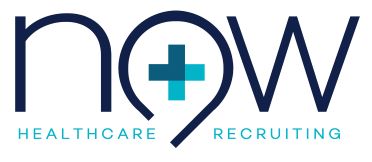In 2023, the healthcare staffing landscape saw several specific trends that impacted the recruitment and management of medical professionals. These trends include:
Shortages in Key Medical Professions:
-
- The demand for certain medical professionals, such as primary care physicians, specialists, and nurses, is expected to outstrip the supply. This can lead to a continued shortage in these roles, necessitating creative staffing solutions.
- An aging population: the number of people 65 and older is expected to grow by 42% between now and 2034. • Retirements: more than two out of five current physicians will be over age 65 between now and 2034.
- There is a shortage for physicians, particularly in the Midwest and Southern regions
- The demand for physicians is expected to increase, some specialties more than others.
- Rural and underserved areas pay the highest salaries and the biggest bonuses
- Family Physicians, which used to be in the highest demand, have not been the most recruited physicians since 2020
Increasing Reliance on Advanced Practice Providers (APPs):
-
- Nurse practitioners (NPs) and physician assistants (PAs) are increasingly being utilized to help address physician shortages. Their scope of practice continues to expand, making them essential members of healthcare teams.
- There are more than 355,000 nurse practitioners (NPs) licensed in the U.S. More than 36,000 new NPs completed their academic programs in 2020-2021. 88.0% of NPs are certified in an area of primary care, and 70.3% of all NPs deliver primary care. Nurse practitioner was named by U.S. News & World Report as the top health care job in 2023
- The Physician Assistant workforce in 2021 was 137,894 people (66.7% women and 33.3% men). This implies an average annual growth of 19.2% between 2014 (115,695) and 2021 (137,894)
Telehealth Integration:
-
- Telehealth and virtual care are becoming more deeply integrated into healthcare, leading to a need for telemedicine professionals, including telehealth nurses, physicians, and support staff.
Advanced Technology and Automation:
-
- The integration of advanced technology, such as artificial intelligence (AI) and robotic-assisted surgery, is changing the healthcare landscape. This trend requires healthcare organizations to hire professionals with expertise in these areas and ensure that their workforce is tech-savvy.
Mental Health and Behavioral Health Providers:
-
- The focus on mental health and behavioral health has intensified, leading to increased demand for psychiatrists, psychologists, social workers, and counselors. The integration of mental health services into primary care settings is also a significant trend.
Increased Emphasis on Preventive and Population Health:
-
- As healthcare shifts towards preventive and population health management, professionals in these areas, including health educators, wellness coaches, and public health experts, will be in higher demand.
Team-Based Care Models:
-
- The emphasis on team-based care models has increased in 2023, such as the patient-centered medical home (PCMH) and accountable care organizations (ACOs), requires a diverse range of healthcare professionals to work collaboratively, including care coordinators, case managers, and medical assistants.
Healthcare Staffing Agencies and Vendor Management Systems (VMS):
-
- Healthcare organizations are increasingly relying on staffing agencies and Vendor Management Systems (VMS) to streamline the hiring process and manage contingent staffing, including locum tenens and temporary medical professionals.
Enhanced Credentialing and Compliance:
-
- Stringent credentialing and compliance standards are becoming even more critical to ensure patient safety and regulatory compliance. Organizations are investing in tools and professionals to manage this complex process efficiently.
Global Recruitment and Visa Sponsorship:
-
- In regions with severe healthcare professional shortages, organizations are looking beyond national borders for talent. International recruitment and visa sponsorship programs are on the rise to fill gaps in medical staffing.
Work-Life Balance and Well-being:
-
- Healthcare organizations are recognizing the importance of staff well-being and work-life balance to combat burnout. Initiatives like flexible scheduling, mental health support, and stress reduction programs are gaining prominence.
- More and more NPs, PAs and Physician desire a 4 day work week than ever before, and many are getting it.
Continuing Education and Training:
-
- The rapid advancement of medical knowledge and technology requires continuous education and training for medical professionals. Organizations are investing in ongoing professional development to keep their workforce up-to-date.
Lingering COVID impacts:
As a result of COVID-19, in 2021, 72% of physicians reported a reduction in income, 43% had to work with reduced staff, and 8% closed their practices. By 2022, hiring had increased and long-term health challenges and the aging population drove rehiring and increased income:
- 15% experienced a reduction in income, down from 72% in 2021
- 8% have had to work with reduced staff
- 8% have had to close their practice: largely a result of retirement
By staying abreast of these medical staffing trends in 2023, healthcare organizations can adapt to the evolving landscape, address workforce shortages, and deliver high-quality patient care.

